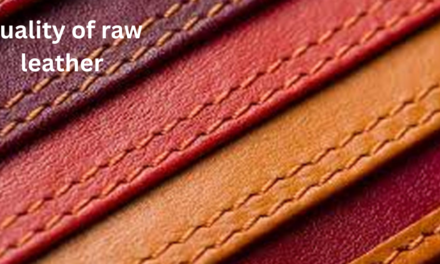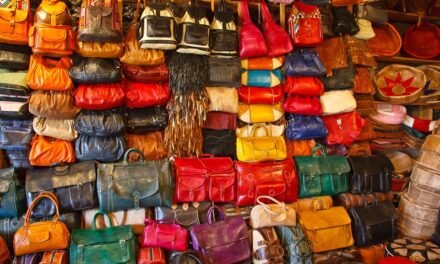Innovations in sustainable leather production are transforming the industry by reducing environmental impact, improving efficiency, and addressing ethical concerns. Here are the key innovations driving sustainability:
1. Eco-Friendly Tanning Methods
- Vegetable Tanning: Uses natural tannins from plant sources (bark, leaves, fruits) instead of harmful chemicals, producing biodegradable leather.
- Chrome-Free Tanning: Eliminates toxic chromium salts, replacing them with alternatives like aldehydes, zeolites, and synthetic organic tanning agents.
- Wet White Tanning: Produces chromium-free white leather using organic compounds, reducing wastewater contamination.
- Enzymatic Tanning: Utilizes natural enzymes to replace harsh chemicals, minimizing pollution and resource use.
2. Bio-Based and Lab-Grown Leather Alternatives
- Mycelium Leather: Made from fungal mycelium (roots of mushrooms), offering a biodegradable, sustainable alternative to animal leather.
- Plant-Based Leather: Innovations include using pineapple fibers (Piñatex), cactus leather, apple peels, and cork as sustainable leather substitutes.
- Lab-Grown Leather: Bioengineered leather created using animal cells cultured in labs, reducing the need for livestock farming and its environmental impact.
3. Waste Reduction and Circular Economy
- Recycled Leather: Leather scraps and off-cuts are reprocessed to create new products, reducing landfill waste.
- By-Product Utilization: Tanners use meat industry by-products, ensuring no animal parts are wasted.
- Zero-Waste Processing: Tanneries adopt processes to recycle water, reuse chemicals, and reduce solid waste.
4. Water and Resource Efficiency
- Closed-Loop Systems: Tanneries implement water recycling and treatment systems to minimize freshwater use and wastewater discharge.
- Waterless Tanning: Emerging technologies eliminate or significantly reduce water usage in tanning processes.
- Reduced Chemical Usage: Innovations in tanning agents and processing reduce reliance on harmful chemicals.
5. Renewable Energy Adoption
- Tanneries are transitioning to solar, wind, and biomass energy for operations, lowering carbon emissions.
- Energy-efficient machinery and LED lighting further reduce energy consumption.
6. Cleaner Finishing Technologies
- Water-Based Finishes: Replace solvent-based coatings with water-based alternatives to reduce volatile organic compounds (VOCs).
- Digital Printing: Enables precise patterns and designs on leather, minimizing dye and chemical waste.
- Low-Impact Dyes: Use of natural and non-toxic dyes reduces water pollution and chemical exposure.
7. Traceability and Transparency
- Blockchain Technology: Provides a transparent supply chain, tracking leather from farm to finished product to ensure ethical and sustainable practices.
- Certifications and Standards: Initiatives like the Leather Working Group (LWG) and ISO 14001 ensure tanneries meet strict environmental criteria.
8. Sustainable Chemistry and Biomaterials
- Development of bio-based tanning agents and natural polymers replaces synthetic and petroleum-based chemicals.
- Innovations include using plant oils, starches, and resins for finishing processes.
9. Carbon Footprint Reduction
- Adoption of life cycle assessments (LCAs) helps measure and minimize the environmental impact of leather production.
- Some companies are offsetting carbon emissions through reforestation projects or investments in renewable energy.
10. Smart Manufacturing Technologies
- Automation and AI: Streamline processes, reduce waste, and optimize resource usage.
- 3D Scanning and Digital Prototyping: Minimize leather waste by improving precision in design and cutting processes.
Key Benefits of Innovations in Leather Production
- Reduced Environmental Footprint: Water, chemical, and energy consumption are minimized.
- Waste Management: Circular economy practices reduce landfill contributions.
- Increased Consumer Trust: Transparent supply chains and certifications enhance brand reputation.
- Ethical Alternatives: Lab-grown and plant-based leathers provide cruelty-free options while maintaining leather-like properties.
- Resource Efficiency: New technologies optimize production processes to save time, energy, and costs.
Conclusion
Sustainability in leather production is being driven by eco-friendly technologies, alternative materials, resource efficiency, and circular practices. These innovations are reshaping the industry, making leather production cleaner, ethical, and more environmentally responsible while meeting the demands of conscious consumers.
Hashtags
#EcoLeather #SustainableFashion #EcoFriendlyMaterials #EcoLeatherGoods #EcoLeatherProducts #EcoLeatherIndustry #EcoLeatherTrends #EcoLeatherDesign #EcoLeatherStyle #EcoLeatherMovement #EcoLeatherRevolution #EcoLeatherCommunity #EcoLeatherAdvocacy #EcoLeatherAwareness #EcoLeatherChoices #EcoLeatherAlternatives #EcoLeatherInnovation #EcoLeatherSolutions #EcoLeatherFuture #EcoLeatherInspiration #EcoLeatherLifestyle







